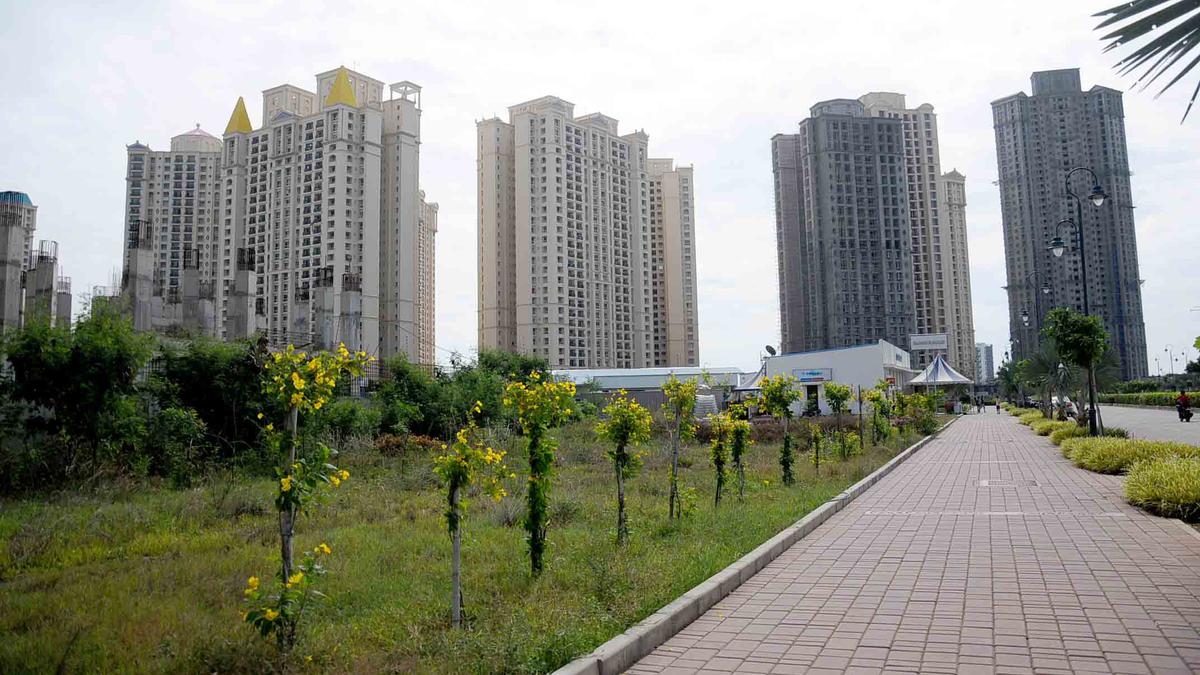
Madras High Court imposes costs on Chennai township residents for preventing builder from constructing towers on land originally meant for clubhouse
The Hindu
The Madras High Court has imposed costs of ₹1,19,500 on 239 residents of the House of Hiranandani (HoH), a township being developed in phases on 118.37 acres in Egattur near Chennai, for having suppressed certain facts to obtain an interim order on March 10 this year, preventing the builder from constructing two residential towers in an area originally earmarked for the construction of a second club house.
The Madras High Court has imposed costs of ₹1,19,500 on 239 residents of the House of Hiranandani (HoH), a township being developed in phases on 118.37 acres in Egattur near Chennai, for having suppressed certain facts to obtain an interim order on March 10 this year, preventing the builder from constructing two residential towers in an area originally earmarked for the construction of a second club house.
Justice R.M.T. Teekaa Raman said the builder, Hiranandani Developers Private Limited, had obtained revised approval from the Directorate of Town and Country Planning (DTCP) in 2020 for the construction of the two towers named Octavius and Veronica, each with 18 floors apart from stilt and two basements, on a piece of land where a clubhouse measuring 10,413.50 square metres had been planned earlier for phase II of the project.
The judge said the builder had begun constructing the two towers after deciding to convert an adjacent sports hall, originally planned on 923.53 square metres, into a club house-cum-sports hall by constructing one more floor over the hall and increasing the total built up area to 1,687.47 square metres. “This factual position appears to have been suppressed by the petitioner (Chennai Hiranandani Residents Welfare Association),” he wrote.
Justice Raman also said the petitioner association wanted to arm-twist the builder by seeking free memberships to the club house that had already been built in phase I of the project and when that did not fructify, it filed the present writ petition challenging the DTCP approval for the revised plan. Since there were 239 members in the association, the judge directed each of them to pay ₹500 to the builder for having stalled the construction of the twin towers since March this year.
The judge also pointed out that every flat owner in the township had given specific consent, right at the time of purchasing the flats, that the builder would be entitled to get the township development plan revised as and when required. Therefore, it was not right on the part of the petitioner association to now contend that the builder must obtain consent once again from the existing residents to construct residential towers in a place originally earmarked for clubhouse, he said.
On the petitioner association’s contention that construction of two more high-rise residential towers on an area meant for club house would prevent free flow of air and availability of sunlight to the existing towers in phase II of the project, the judge said, those issues related to deficiency, if any, in provision of amenities could be raised only before the Tamil Nadu Real Estate Regulatory Authority and not before the High Court by way of a writ petition.

“Writing, in general, is a very solitary process,” says Yauvanika Chopra, Associate Director at The New India Foundation (NIF), which, earlier this year, announced the 12th edition of its NIF Book Fellowships for research and scholarship about Indian history after Independence. While authors, in general, are built for it, it can still get very lonely, says Chopra, pointing out that the fellowship’s community support is as valuable as the monetary benefits it offers. “There is a solid community of NIF fellows, trustees, language experts, jury members, all of whom are incredibly competent,” she says. “They really help make authors feel supported from manuscript to publication, so you never feel like you’re struggling through isolation.”

Several principals of government and private schools in Delhi on Tuesday said the Directorate of Education (DoE) circular from a day earlier, directing schools to conduct classes in ‘hybrid’ mode, had caused confusion regarding day-to-day operations as they did not know how many students would return to school from Wednesday and how would teachers instruct in two modes — online and in person — at once. The DoE circular on Monday had also stated that the option to “exercise online mode of education, wherever available, shall vest with the students and their guardians”. Several schoolteachers also expressed confusion regarding the DoE order. A government schoolteacher said he was unsure of how to cope with the resumption of physical classes, given that the order directing government offices to ensure that 50% of the employees work from home is still in place. On Monday, the Commission for Air Quality Management in the National Capital Region and Adjoining Areas (CAQM) had, on the orders of the Supreme Court, directed schools in Delhi-NCR to shift classes to the hybrid mode, following which the DoE had issued the circular. The court had urged the Centre’s pollution watchdog to consider restarting physical classes due to many students missing out on the mid-day meals and lacking the necessary means to attend classes online. The CAQM had, on November 20, asked schools in Delhi-NCR to shift to the online mode of teaching.









